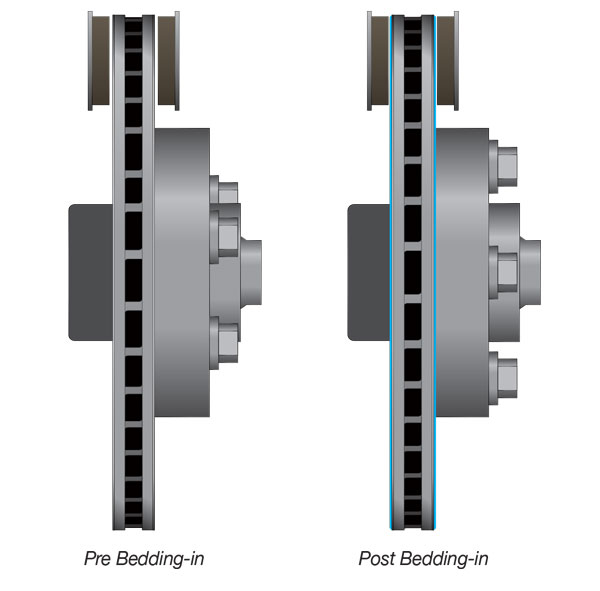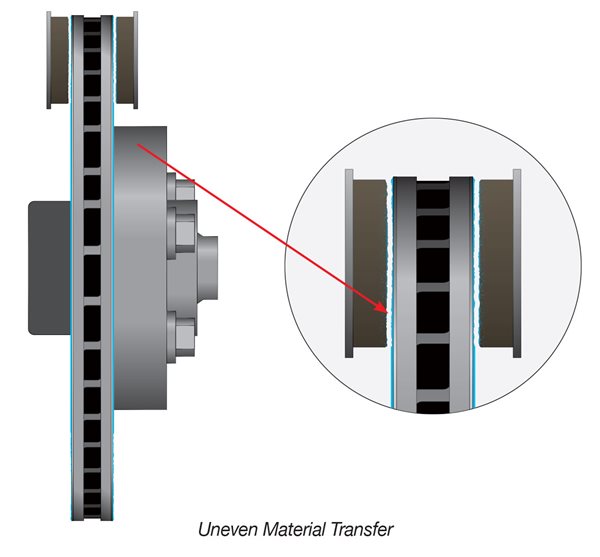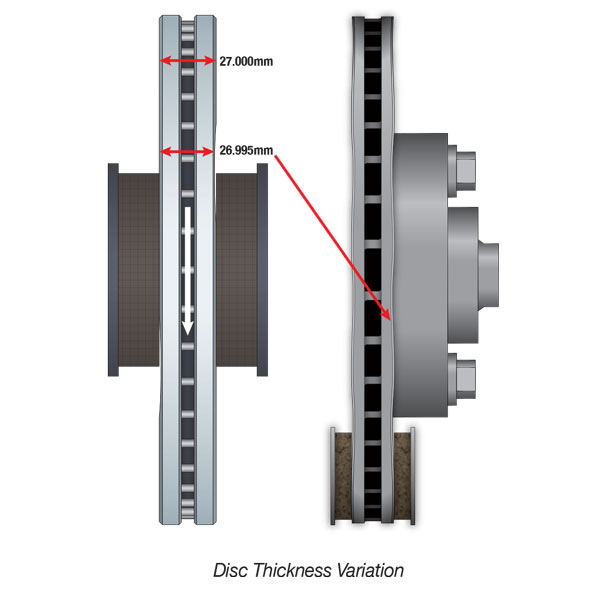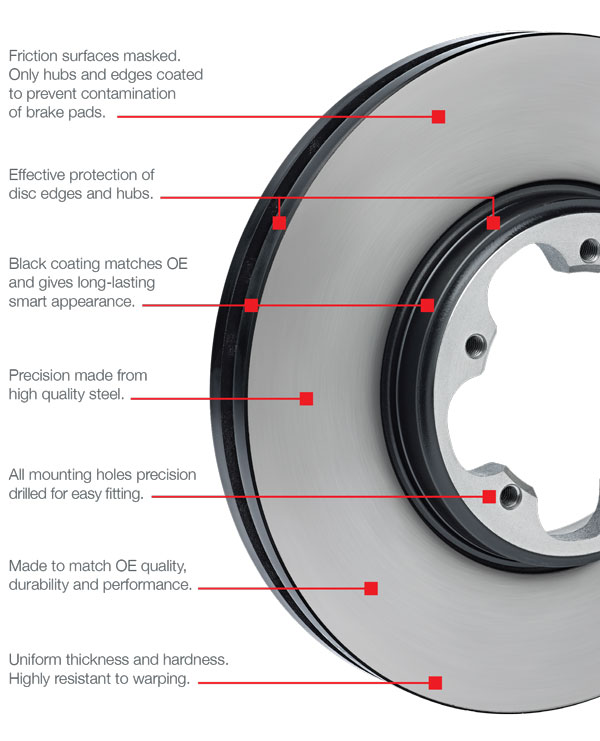Bedding-in and Material Transfer Process
29 Sep 2021
Definition
The “bedding-in” for brakes is essential for the brakes to perform optimally. Friction is key for efficient braking. Friction is a force resistant to movement between contacting areas. In braking there are 2 types of friction processes that occur during the material transfer process. To understand the bedding in process and material transfer process, we need to comprehend the difference between the 2 types of friction processes, which are the abrasive and adherent friction process.
Abrasive Friction Process
When the brake pads are compressed against the brake disc, the pressure and contact from the 2 surfaces will generate heat and cause the breaking down of particles on the surface of the material. If you could mount a microscope on a brake pad, you would see tiny particles of the pad and disc breaking away from the surfaces as they contact each other. As this is happening, the heat is physically and chemically changing the exposed friction material as particles are being torn or sheared from both components. This leads to the mechanical wear of the discs and pads, consequently having to be replaced when worn past their limit of performing efficiently. Some particles become part of the friction surface of the disc, while others are cast off and form brake dust, that stick to wheels and eventually will be washed down the drain, potentially polluting the environment.
Adherent Friction (Bedding-in) Process
The particles that become part of the friction surface results in the adherent friction process, which is also known as the bedding in process. This process transfers a layer of brake pad material onto the disc. Once the brake pad material is sufficiently transferred to the surface of the disc, it increases the coefficient of friction or, simply put, makes the brakes more “grabby” to each other. Because there are two forces at work here, adherent friction and pressure, stopping distances can be improved by up to 20 percent.
The material transferred acts as a sort of adhesive, that literally sticks to the brake pad as it’s being compressed against the disc. This creates a barrier between the pads and the disc preventing the disc from being ground down to a powder by the brake pads and vice versa meaning your brakes will last significantly longer. Adherent friction is not as a destructive force as abrasive friction due to that protective barrier preventing the brakes from being worn down as fast. To ensure continuous smooth operation of brakes, the process of material transfer from the brake pad must be evenly distributed on the disc surface.
Adherent friction is a totally evolving process, as heavy braking will remove some of this material transferred to the disc and will need to be replaced under normal braking conditions.

Recommended Bedding-in Procedure
Bedding-in new discs and pads should be done with care to ensure even material transfer. Correct bedding guarantees that new brake pads and new discs work flawlessly together. During the test drive, the vehicle should be driven at a moderate speed (30-35mph) and brakes should be applied gradually (normally) without coming to a complete stop, to initiate the material transfer process. This process should be repeated for 8-10 times. Avoid more than a minute between each brake application to maintain the temperatures needed for the bed in process. When handing the vehicle back to the customer, it is essential to advise them to brake gradually (normally) and to avoid feathering their brakes or heavy braking for about 200 miles to continue the bedding in process correctly.
Potential Issues
Too little heat during bedding keeps the pad material from transferring to the disc face. Therefore avoid feathering the brake pedal or over-heating the system with heavy braking. This can generate uneven pad deposits due to the material breaking down and sticking to the disc, causing a Stick/Slip situation. Once this has happened, heavy braking will lead to uneven heat build-up due to the uneven distribution of friction material across the disc, with high-spots heating excessively in comparison to the rest of the disc. In the event of this happening this will lead to the disc suffering from excessive Disc Thickness Variation.


Material transfer is a continuous process after bedding in and anything affecting the even transfer of material on the brake disc will cause issues. The biggest cause of uneven material transfer is excessive lateral runout. Please see our article on understanding brake judder for a detailed explanation. Other causes may be as simple as poor technique, using the brake pedal to slow the car rather than engine braking on serious inclines or repeated ‘emergency’ style stops without adequate cooling time or even a mechanical issue such as a sticking pad, slider or caliper that affects the even material transfer process.

Apec focus on quality
All Apec brake pads and manufactured from the latest generation friction materials and benefit from a unique “High Pressure Treatment” (HPT) scorching process to provide superior initial performance and easier bedding in. Apec partially coated discs are made to match OE standards. Just like original discs that have coated hubs and edges, Apec discs have them too! However, there is no coating on friction surface to facilitate the even material transfer process. Without any coating on the friction surface there is nothing to contaminate the pads to reduce their efficiency.

TECHMATE is here to make your life easier
When you need to know more about braking with Apec, ask TECHMATE.